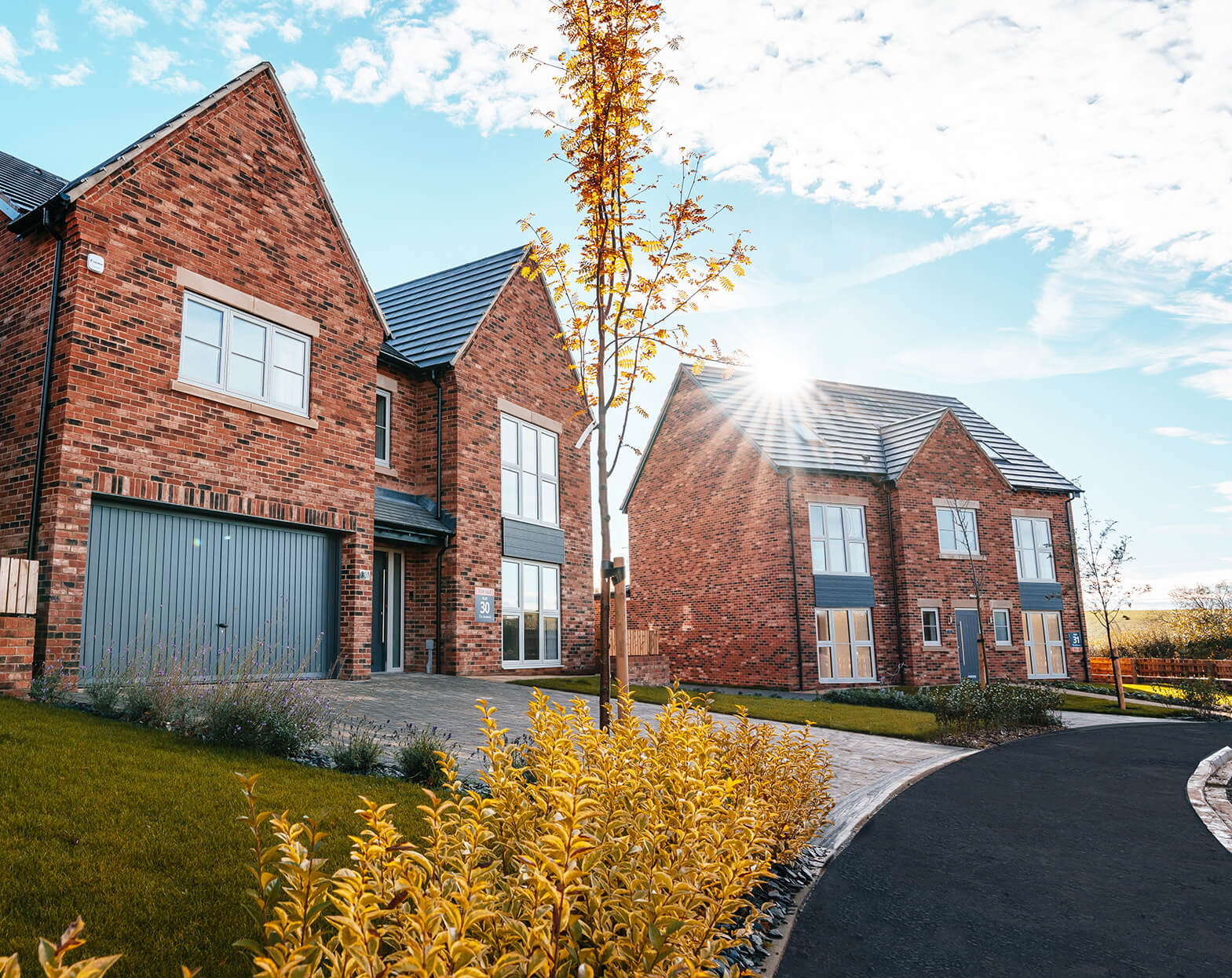How to get into property: which route is best for you?
Property is suggested as being the oldest form of investment - and with good reason.
Land is the basis for almost all wealth and its creation, and they’re not making any more of it. This is particularly true in the UK, which is a crowded country with a growing population.
It’s hardly surprising then that house prices in the UK have been on an upward trend for a long time. There have been blips, periods of stagnation and even falls in price, but the general trend has been for prices to rise.
The Department of Communities and Local Government records that the average UK house price in 1969 was £4,640. By 2007 this had risen to £223,405.
According to the experts, this trend is likely to continue. Leading international property agent Savills autumn 2018 Residential Property Forecasts predicts an overall UK house price growth of 14.8% over the next five years. This is a national average and the North is likely to see a higher rate of growth, with prices in the North West and Yorkshire likely to grow by more than 20% and, in the North East by 17.6%.
UK residential property could therefore play a valuable part in any property portfolio. But, there are many ways of investing and the skill lies in deciding which is the best for you. The answer will differ from one person to another, as it very much depends on your personal circumstances:
- The money you have available to invest
- Can you invest a large lump sum, or would you need to regularly invest smaller amounts?
- Can you afford for your money to be tied up or do you need access to it at short notice?
- If you can afford to tie your money up – for how long?
- Do you have any knowledge of the property market, or applicable skills?
With questions like this raised, let’s take a look at some of the options available to you.
Buy land and build
This is the most obvious and direct way of investing in residential property and also probably the best way to potentially maximise your returns - but it’s also probably the easiest way to maximise your potential losses.
To see success, it needs extensive knowledge and experience of the sector. You need to have the skillset to be able to carry out the work yourself, or know enough experienced tradespeople - and have confidence in them - to deliver on your behalf.
Buy and improve
Less ambitious than building houses from scratch is buying a property and improving it before selling it on for - ideally - a profit. This has always been a popular route for people looking to make money in the housing market, as it can become somewhat of a standardised process that's able to be repeated numerous times.
A particularly good way of investing for people who have the required capital and the necessary, skills knowledge and contacts, if you’re familiar with the property market in general and with the local market in which you’re investing in particular, this can be a good way for you to invest.
However, you’ll also need sufficient capital to buy a property and to improve it and you’ll also need to be comfortable with your capital being tied up in the property until the time comes to sell it.
Buy and let
Buy-to-let as a form of property investment enjoyed its real boom years in the 1990s. Soaring property values combined with low interest rates made it a highly attractive proposition for any investor.
Renting out a property brought in a regular income from an asset that was also clocking up a healthy capital gain month by month. The availability of buy-to-let mortgages and low interest rates also meant that the investor didn’t have to have the capital value of a property in order to get into the market.
In the end, however, government felt that the buy-to-let sector was getting out of hand and was distorting the housing market. To correct this, it introduced a stamp duty hike, restricted tax relief on interest payments and tighter regulation on mortgages.
This has had an effect and property expert Savills points out that mortgaged buy-to-let market purchases have fallen by 43%. However, there are still opportunities, particularly in the northern cities, where the ability to achieve higher income yields continues to underpin investment demand from both institutional and private investors.
Holiday lets
Related to buy-to-let are holiday lets. Clearly such properties need to be in popular tourist areas, but you’ll likely be able to charge higher rents than for conventional buy-to-let. However, the property will probably have been more expensive to buy, so the yield will not necessarily be higher.
Also, this form of investment requires constant care and attention. The property only makes money when it is occupied and so you have to market it. You also need to provide and fund cleaning, maintenance and repair at intervals directly related to the popularity of the property.
Property shares
One of the simplest and lowest risk ways to invest in the UK housing market is by buying shares in a listed housebuilding company. Your exposure is limited to the original purchase price of your shares, and you generally don’t need to commit a large amount of capital all at once, but can invest smaller amounts over a longer period.
The liquidity of the shares means that you should also be able to sell your shares and turn them back into cash at any point with relative ease, although, this might be for less cash than you paid.
Property funds
If you don’t have the expertise or knowledge to buy shares in individual property company shares yourself, you could invest in a property fund, which buys shares in companies that operate in the sector.
You might also buy shares in a Real Estate Investment Trust (REIT). Most of the UK’s largest property companies have converted to REITs, which are limited companies and so escape much of the tax on residential lettings.
But, to qualify as a REIT, at least 75% of profits must come from property rental, and 75% of the company’s assets must be involved in the property rental business. REITs must also pay out 90% of their rental income to investors.
Property bonds
These are corporate bonds issued by a company to fund property projects, which could be specified at the time of issue, or the cash raised can be used to fund a portfolio of developments over time. The bonds are secured against the properties invested in.
The investor lends the face value of the bond to the issuer which will be repaid when the bond matures. Each bond also specifies a fixed interest rate and the interest is paid to the bond holder at regular intervals throughout the bond’s lifetime, or it can be rolled up to be paid in addition to the face value of the bond at maturity.
With new internet-based lending platforms, ordinary investors can invest small amounts in a property bond, giving investors the ability to invest in the residential property market, for a fixed rate of return, which usually compares favourably to other investments, without committing large amounts of capital.
Property joint ventures
Online platforms have been developed which allow large numbers of investors to invest together through crowdfunding. Now investors seeking a decent return on their cash can come together with developers and builders looking for funding.
A development of crowdfunding is co-investment, where you can invest alongside professional investors and builders and developers. These platforms are now being used to fund property developments through a Joint Venture Agreement (JVA), a temporary but formalised partnership of builders, finance houses and developers. A Special Purpose Vehicle (SPV) is created under the JVA, as a limited company in which the investors buy shares. The money they invest can only be used on a specific development.
If the houses sell for more than forecast, then your return will be higher, because the cash returned to an investor as a percentage of the profit achieved equals the proportion of equity they hold. Potential losses are limited to the amount invested.
You’ll have the reassurance of investing alongside experts and the security of having an asset-backed investment. The time frames for a return are typically 18 months to two years and as little as £1,000 can be invested in a single project, allowing you to spread your capital among a number of developments and so mitigate their risk.
Making a decision on property investments
With the information here giving just some high level idea of the many and varied routes for investing in residential property, it's vital you explore each in detail before making a decision as to which route could be best for you as a property investor.
The most successful investors are those who build portfolios around their specific circumstances and requirements. They speak to financial professionals, explore the asset classes and invest in the opportunities that are most suited to them.
And by taking this approach, you can be as confident as possible that you invest in the property investments most suited to you.
%20(3)%20(2).jpg)








